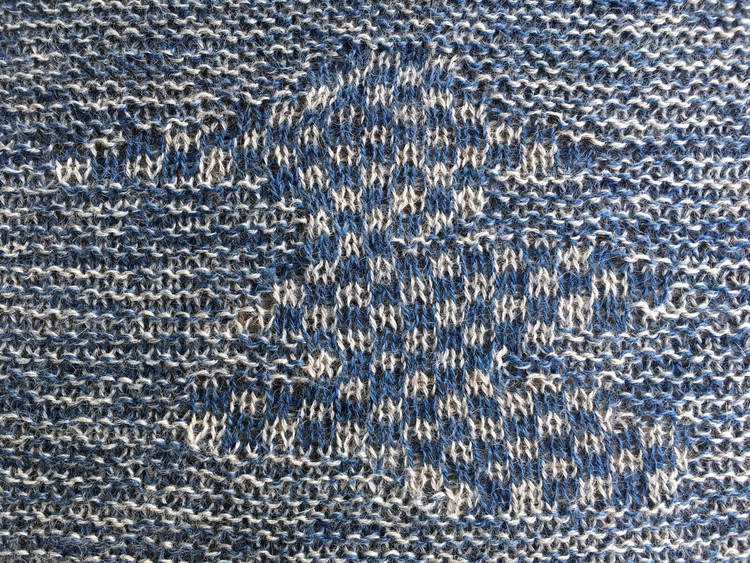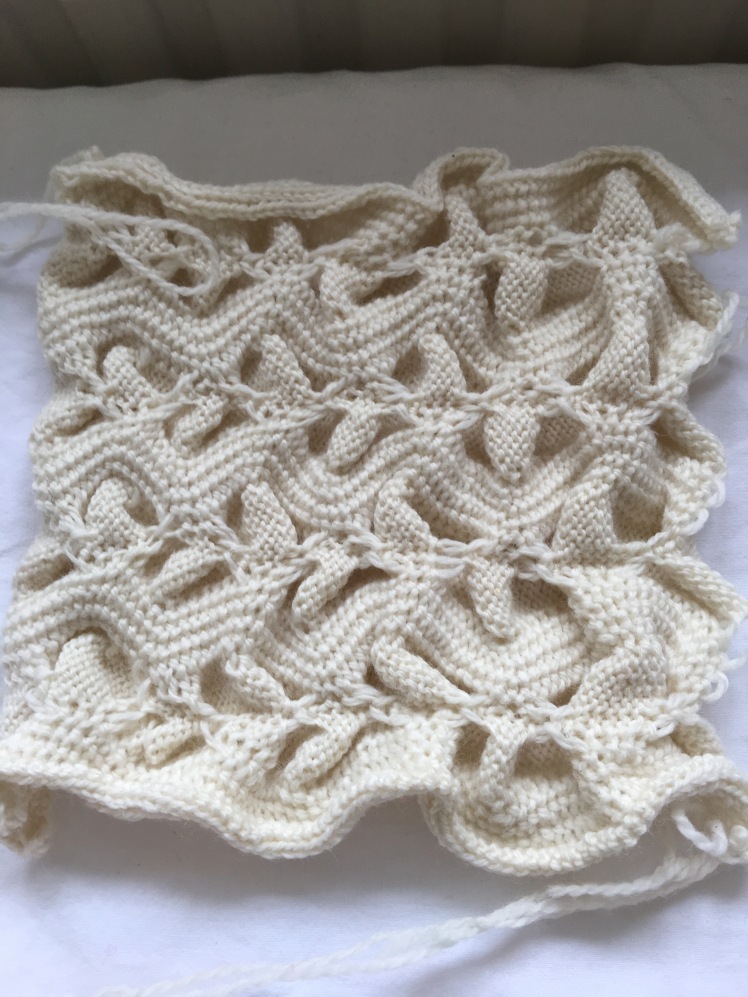Today we draw our freeform inspiration from the impact weathering, neglect and decay have on painted and wall-papered surfaces. Paint cracks, flakes, blisters and peels off surfaces in irregular strips with unexpected frilly edges, exposing unexpected layers of colour documenting eras of changing decorating tastes. Some colours remain as bright as the day they were applied and other mute and fade under the joint influences of sunlight and time.
My Pinterest board, Where Paint goes to Die, curates beauty in aging paint and wallpaper surfaces.
Wallpaper is like a vertical archeological dig, uncovering eras of habitation and decorative influences. I'm always here for florid scroll work, exuberant florals and dubious colour palettes. Sometimes time peels it all back to the underlying structural framework of lathe, hessian, plaster, horsehair or stone.
Knitting technique suggestions
Marlisle
Marlisle is a method of creating decorative texture and colour shifts in
hand-knitted fabric popularised by Anna Maltz (Sweaterspotter) and described in her book Marlisle - a new direction in knitting. By separately knitting the two yarns generally being held together to form
a marl base, Marlisle allows patches of stranded colourwork to be
scattered throughout a knitted piece without the use of intarsia
and avoids long messy floats. Effectively two yarns are used to create three colour effects, the two yarns held together and each worked separately with the other carried behind. The first two swatches below knitted by Anna are what I'd consider to be freeform Marlisle. To me this fairly screams wallpaper.
Here's an example where I've used marlisle with a shifting background colour and self striping yarn. I also love how the motifs here pop up from the marled background.
Dimensional Tuck knitting
Dimensional tuck knitting is a technique developed by Tracy Purtscher where a simple stockinette fabric is manipulated to fold and pucker to create a raised textured surface by knitting tuck stitches at strategic places on the back of the work. I'd highly recommend her book Dimensional Tuck Knitting: An Innovative Technique for Creating Surface Design if you wan to do a deeper dive in the technique
These experimental swatches, inspired by dimensional tuck knitting, and made on a knitting machine by Rachel Brooks, offer a glimpse into the possibilities of this as a freeform technique.
For me the wrong side of the swatch above is equally interesting, offering insights into its construction.
My freeform piece taking shape
I began with an existing experimental swatch. I just can't resist an semi-impossible knitting challenge. When I was leafing through my new Japanese Stitch dictionary: 1000 Japanese Knitting & Crochet Stitches by Nihon Vogue, back in January this year, the description of one group of stitches immediately provoked my interest in weird techniques for creating knitted fabric. 'Patterns 650-653. The four stitch patterns in this section are unusual and challenging'. Of course this was effectively enticing me to try this (immediately). The patterns are a combination of overlaid lace and a pseudo marlisle with multiple layers being knitted in parts. It involves juggling four dpns with front and back stitches.But this swatch keeps whispering, 'Wallpaper?" at me.











No comments:
Post a Comment
I'd love you to say Hi. It's so much fun hearing from my cyber friends.